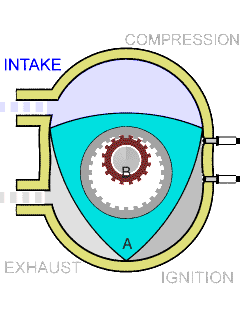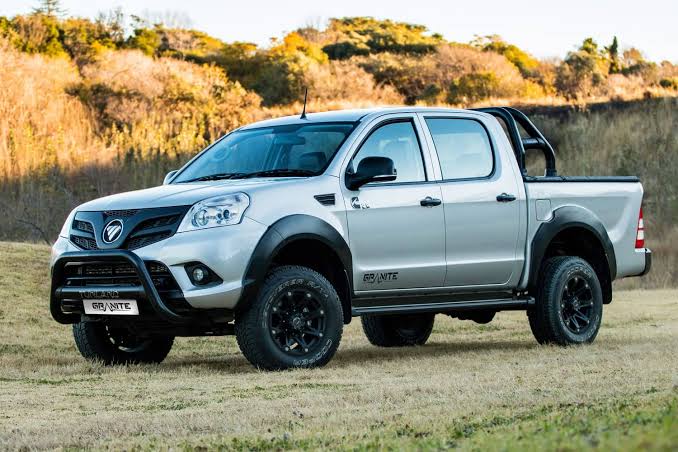The Porsche 919 uses a turbo v4.
both the durmax and powerstroke v8s are ohv with 32 valves.
doubt you will see any ohv 4 cylinder engines except on maybe some special diesel versions perhaps. Turbo dohc does pretty good job for torque. Take a look at the gm 2.7 turbo 4 that torque on that comes in at 1500rpm.
I've raced a push rod I4 powered car for the last 30 years; it revs to 9K with the stock push rods, rockers & retainers (only the valve springs were changed). It's lightweight (175lbs), compact (similar to bike engine) and makes decent power for it's displacement (85hp per liter). With the benefit of modern fuel injection it would be a very good motor for a compact car.
No one would ever put this in a new car because as pointed out there efficiency issues with the layout, from things like the push rods dictating port location to frictional losses. In the current environment, things like 1.5 mpg extra from one architecture to another matter. I'd also imagine having a block that could be used in 1.6-2.5 liter form with multiple cylinder heads (SOHC / DOHC) bolted to them is also a consideration.
In reply to Tom1200 :
I don't think anyone would consider a SOHC architecture anymore except for an ultra-cheap engine. There are just too many advantages to being able to move the intake and exhaust cam separately. Or rather, it's needed to get that extra few percent that is expected nowadays.
I think the only single-cam heads anymore are on Fits, unless that has changed too.
In reply to Knurled. :
Yup, with the L15A7 in the Gen3 (i.e. ~2014?)
what about nissan?
volvoclearinghouse said:
You want real simplicity, compactness, and low end torque, we need to revisit the valve-in-block design...
Yeah, they don't do those anymore, they made funny noises:


@knurled yes I agree that in all but the most bargain of set ups a DOHC set up is what one would choose.
It would be interesting to take an old design such as my Nissan A-series or Toyota 2-3tc and add the benfit of modern engine management systems to them to see what kind of power and mileage you got.
In reply to Tom1200 :
I ran an A12A up to 350k miles and was in love with that little car. Two head gaskets and a carb rebuild - just Crappy electrics took it down. So, none of the markets like Australia or South Africa put injection on it? Being BMC derived wasn't there any attempt to do port injection? I'd imagine even tbi would help.
40mpg was the best I could get out of my 80 210. Still, pretty good for Stone Age tech.
The Nissan A-series is in now way shape or form BMC derived; the Austin derived motor Nissan made is from the 50s.
The last of the A15 motors were fuel injected; they were rated at 92hp versus the 80hp carb version.
The A15 motor I was running made 99hp at the wheels and would have been perfectly streetable albeit not making much power down low.A modern engine management system could help that a lot; variable cam, port injection and an ECU to control everything wouldn't likely net a whole lot more peak horsepower but would make it more efficient as well as broaden the powerband.
Lighter components could also be incorporated; the machine shop I use was shocked at how overbuilt they are; when I told him the stock cranks were fine for 9000rpm he wasn't surprised by it.
I always liked the sound of Honda's v4. One of many reasons I would love to own a vfr
edizzle89 said:
it's not in a production car but Cummins 2.8r crate engine is still a pushrod 4 banger, so there's that
It's not a car, but it is a production vehicle. Foton tunlands have the Cummins isf in them.


Tom1200 said:
@knurled yes I agree that in all but the most bargain of set ups a DOHC set up is what one would choose.
It would be interesting to take an old design such as my Nissan A-series or Toyota 2-3tc and add the benfit of modern engine management systems to them to see what kind of power and mileage you got.
Power and mileage are nothing without clean emissions. Hemispherical heads (like the T engines) are not what you want for that.
Variable intake cam timing for a broader powerband, variable exhaust cam timing for fast catalyst light-off and then tightly controlled exhaust residuals without the need for a failure-prone EGR valve, and, in many cases, a turbocharger for increased thermal efficiency and the ability to run a smaller engine for the same expected performance. That is the real value of "modern engine management", it's not just ultra fine control of spark and fuel. It's control over every aspect of the engine, from valve lift and timing all the way down to variable oil pumps and electric water pumps.
Yesterday I learned that GM has a 1.5l turbo four that is smaller, lighter, more efficient, more powerful, and smoother than the 2.4l Ecotec that it replaced. Spent a good amount of time driving a big-ass Malibu and kept thinking "This is a 1.5? This has a turbo?" Felt like a big four but with even more low end torque and with a lot less shaking.
1.5 Turbo 163hp / 184 lbs 27/36 mpg
2.4 Eco 164hp / 159 lb 26/34 mpg
2.5 eco 197hp / 191 lb 24/36 mpg
While the 1.5 has a bit more torque than the 2.4, the later updated 2.5 beats them both without the need for the Turbos premium fuel. (Yes the 1.5 can run on 87 octane, but it make the numbers on premium and certainly will have a better life span on the better gas)
I miss the simplicity of a pushrod 4. No big, long timing chains (or belts) to wear out and slap around with a bunch of expensive guides and tensioners. And since most of these are in transverse applications service is a nightmare.
Most US pushrod 4's were built as economy car engines, they were never really intended for performance use. Pontiac did try with their Super Duty program in the 80's. Slicing an LS down the middle would be interesting. Pontiac did this in the 60's creating the Trophy 4. It was big, heavy, and not much to get excited about.
AngryCorvair said:
my buddy just bought a '69 nova that has the original pushrod 4 cyl (I believe it's the original Iron Duke). i'm going to check it out this weekend.
That will be the Chevrolet 153cid. Basicly an inline 6 minus 2 cylinders. This design was increased to 3.0L for boat engines well into the 90's.
the Iron Duke was Pontiacs 151cid design that came out in 1977.
Isn't there a 4 cylinder engine that is based on one bank of an LS engine for sprint cars?
Could a variation end up in a new car? Doubtful.
In reply to Gearheadotaku :
The 2.5 isn't an update, it's a completely different engine. Altogether.
ChasH said:
sleepyhead the buffalo said:
In reply to alfadriver :
I’m curious where the cam ends up in space on an in-line pushrod 4?
Also, has anyone played around with composite pushrods to reduce mass/inertia?
Opel used a 4 cylinder engine with the cam high in the block, eliminating the push rod. An hydraulic tappet acted directly on a rocker arm. There's no need for pushrods in a modern engine- an OHC operating roller followers reduces friction, which lowers fuel consumption. Less parts means lower weight and man'fering costs.
The Opel engine was a CIH, cam in head design, not in the block. The cam is along the sides of the valves, with a lifter and rocker arm. Kinda all the disadvantages of pushrod motors and ohc motors at the same time.

ChasH
Reader
8/3/19 9:43 p.m.
I'm not gonna argue with an old Opel guy.
If you said production vehicle instead of car, you don’t need to search far. You can still buy a brand new Nissan forklift with a H20 motor, that is the same motor from the Datsun 1600 convertible, just different head.

ShawnG
PowerDork
8/4/19 11:33 p.m.
The Auto Union V16 is a SOHC design but has only one cam to operate both heads.
Both cylinder heads share a central rocker box for the intake valves which are operated by rocker arms acted on directly by the cam lobes.
The exhaust valves on each bank are operated by rocker arms actuated by pushrods driven of the central camshaft.
Couldn't decide if this belonged here or in the "mind blown" thread.


NickD
PowerDork
8/5/19 5:14 a.m.
Knurled. said:
Yesterday I learned that GM has a 1.5l turbo four that is smaller, lighter, more efficient, more powerful, and smoother than the 2.4l Ecotec that it replaced. Spent a good amount of time driving a big-ass Malibu and kept thinking "This is a 1.5? This has a turbo?" Felt like a big four but with even more low end torque and with a lot less shaking.
Too bad that those engines break pistons with alarming frequency.
In reply to NickD :
Eh, so did LS6s. Although that was mainly due to the heads coming off of the valves.

NickD
PowerDork
8/5/19 8:40 a.m.
In reply to Knurled. :
I believe this is more due to stoichastic preignition. GM actually had us do an ECM reprogram on them when they came out with the engine to resolve that issue. Clearly that didn't work though. Kinda like how they've had us reprogram the transfer cases in the '14+ trucks three or four different times to try and get them to stop locking themselves in 4-Hi and they are still doing it.
In reply to NickD :
After so many years, LSPI is still not fully understood. Other than it's really, really bad.
The best idea is to just not run there- you have gears, downshift.
So after taking a walk- I thought some about the idea that OHV engines are "simpler" than OHC engines.
And when you go through the parts, I'm not seeing that.
Here's what a simple 2V OHV engine has:
8 valves,
8 springs, retainers, caps (call them one part, for the sake of it)
8 rocker arms with adjustments
8 pushrods
8 lifters
1 cam
1 sprocket
That's 42 parts spread over the head and the block.
Vs a 8V Alfa, with direct acting buckets
8 valves
8 springs, retainers etc
8 lifters (with adjustments)
2 cams
2 sprockets
1 intermediate sprocket (which isn't as needed)
That's' 37 parts, all in the head, except for the intermediate sprocket.
So for the most simple set up, the DOHC system has fewer parts.
With a SOHC set up, you get the rocker arms, but still don't have the pushrods, and all of it is still in the head.
I'm wondering how OHV engines can be considered "simpler"?

NickD
PowerDork
8/5/19 8:56 a.m.
In reply to alfadriver :
When it's in automatic-equipped vehicles (pretty much all Malibus and Equinoxes and most Cruzes with this engine), you're really at the mercy of transmission control calibrations though. Telling customers that they need to manually shift their automatic vehicle to avoid blowing up engines is kind of a hard sell.










































